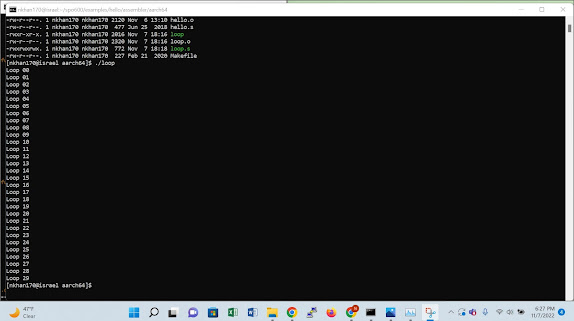Naziur Rahman khan Fall 2022 SPO600 Project (Algorithm-part1)
Implementation of ifunc-capable Software in
Python.
Python interpreter has
a great module called ifunc, which provides multi-threaded, compile-time
function selection. It replaces some built-in functions with custom
implementations at compile time. This allows the replacement function to
specialize on a particular type or set of types. ifunc is implemented as an
extension to the CPython interpreter and can be used with any language that can
be compiled into Python bytecode, like Cython and PyPy. This blog post will
show how useful it is to use ifunc-capable software in Python. We will also give
some examples of code that uses ifunc.
Plan for the project
This project aims to
develop an understanding of the implementation of ifunc-capable software in
Python. If you're a Python programmer, then you know that ifunc is a powerful
tool that can be used to great effect in your programs. However, implementing
ifunc can be tricky, and it often needs to be clarified how to get started.
That's why we're embarking on this project: to develop a comprehensive
understanding of how to use and implement ifunc in Python programs. We'll be
researching the best ways to use ifunc and developing a plan to help others do
the same. By the end of this project, we want to have a clear and concise guide
that will make it easy for anyone to add ifunc to their Python programs.
To achieve this, the
following steps will be taken:
Step 1 – Research: The first step will
be researching, aimed at gaining an understanding of ifunc, its capabilities
and applications, as well as what types of problems it can help solve. Sources
such as online articles, books, tutorials, videos and blogs will be consulted
to gain this initial knowledge.
Step 2 – Analysis: Once sufficient
background knowledge has been acquired through research, the next step will
involve applying that knowledge to analyze and evaluate the implementation of
ifunc in existing Python programs.
Step 3 – Developing a
Plan:
The following step will involve creating a plan to implement ifunc-capable
software into existing python programs. This plan should include an overview of
the specific tasks that need to be carried out, the relevant resources needed
for each task and any possible challenges that may arise along the way.
Step 4 – Implementation: The final step will
be the actual implementation of the plan developed in step three. This includes
carrying out all tasks detailed in the plan, resolving any issues and ensuring
that everything is working properly before completion.
This article will
first provide an overview of the project, including its goals and steps to be
taken. It will then discuss each step in greater detail and provide further
information on how they can be carried out effectively. Finally, it will
conclude with a summary of the key points discussed in the article.
End Result: By the end of this
project, readers will have a comprehensive understanding of how to use and
implement ifunc-capable software into existing Python programs. They will know
what ifunc is, how it works, and its applications in Python programming.
Additionally, they will have learned how to develop a plan for implementing
ifunc into their projects and the steps needed to carry out that plan. This
project is designed to give readers everything they need to use ifunc in their
projects. By following the outlined plan, readers should be able to confidently
use ifunc to improve the performance of their Python programs.
By following these
steps, readers should understand how to use and implement ifunc-capable software
into existing Python programs by the end of this article. They should be
equipped with the knowledge and skills needed to develop their plans for
implementing ifunc into their projects and carry them out successfully.

Comments
Post a Comment